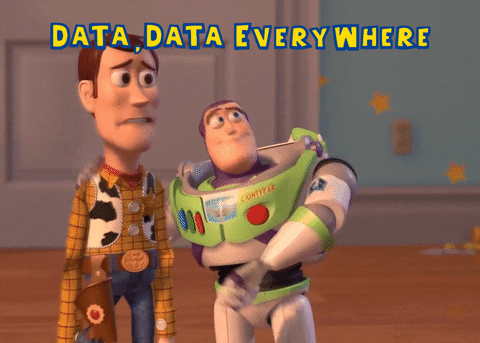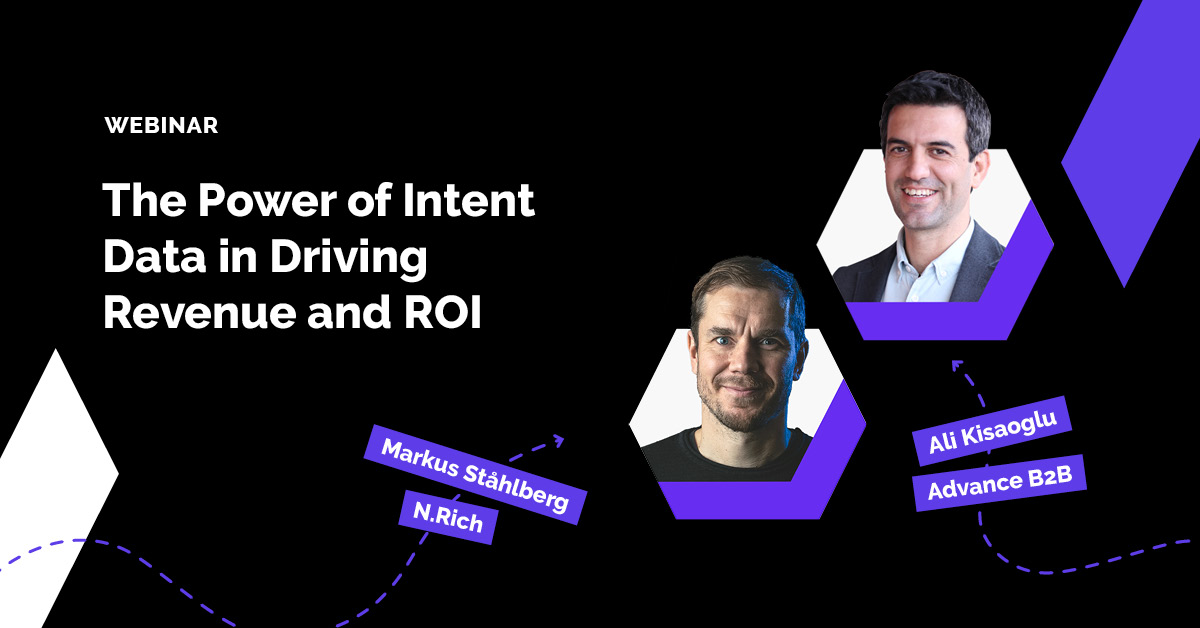Before we get into the topic of the day—cookies—let’s try this out:
A data strategist, a content marketer, and a paid advertiser walk into a room and realize there are no cookies. They say, "Guess we'll have to find a new recipe for success!"
Did that joke work?
No?
No. I thought as much.
And we don’t go into rooms looking for cookies. We just assume they’ll always be there, giving us delightful crumbs of information about our target audience.
Until one day, they’re no longer there, and we’re left to think about ways to connect with our audience. 
Wait! There’s no need to panic.
The impending demise of third-party cookies might initially sound like a setback, but it's actually opening doors for marketers to explore new strategies and technologies that enable them to gather essential data for audience targeting and personalization in exciting ways.
A cookieless world. What does that even mean?
There has been some confusion about what a cookieless future looks like. Let’s clear it up once and for all with the help of our:
First and foremost, a cookieless environment doesn’t mean there will no longer be any cookies.
It simply means we can no longer rely on third-party cookies to target and connect with our audience. Traditional methods of tracking user behavior through cookies are becoming obsolete.

Advertisers and marketers need to adapt to privacy-focused measures and explore alternative strategies like contextual targeting, first-party data, and consent-driven approaches to deliver personalized experiences while respecting user privacy.
Sounds difficult?
It’s not.
We’ve done this before — pre-internet before cookies were a thing.
In this article, we’ll discuss how this change affects marketing and how to navigate them. But if you’re pressed for time, here’s the one and only takeaway for you:
Your first-party data is now going to be more important than ever.
Your audience now has full control over whether or not they want to engage or keep engaging, with you. Make every touchpoint count.
The death of third-party cookies
To understand the implications of this cookieless world, let's first dive into what third-party cookies are and why they're facing their demise.
Imagine them as tiny text files stored on your browser by websites you visit other than the one you're currently on. These cookies track your online behavior across multiple sites, enabling marketers to gather data about your interests, preferences, and activities. They then use this data to deliver targeted ads and create personalized experiences tailored to you.

(Singing Ricky Nelson’s infamous ‘I Will Follow You’ song in your head as well? Yea, it’s an earworm.)
However, growing concerns about privacy and data protection have led to increased scrutiny and regulatory changes — GDPR, anyone?
People are becoming more aware of their online privacy rights and demanding greater control over their personal information.
As a result, major web browsers like Chrome, Safari, and Firefox are phasing out support for third-party cookies. This shift aims to enhance user privacy and provide a more transparent and secure online experience.
Privacy, yay! Marketing, on the other hand…
Undoubtedly, the death of third-party cookies will profoundly impact the marketing industry.
Marketers heavily rely on these cookies for tracking, targeting, and measuring the effectiveness of their advertising campaigns. The death of third-party cookies poses great challenges to understanding user behavior and delivering personalized experiences.
And as we’ve mentioned before: Your first-party data is now going to be more important than ever.
Data competitiveness will be a function of two things:
- The source of your data: its accuracy and freshness, provenance and legal permission, and exclusivity.
- How effectively you distill and activate that data in your business operations and customer experiences and its exclusivity.
Watch the webinar: The Power of Intent Data in Driving Revenue and ROI
First-party data is valuable in establishing trusted customer relationships
There are approaches to fill the gap left by third-party cookies. But more on that later. Let’s quickly talk about the not-so-new-but-is-becoming-very-important-kid in town, first-party data.
First-party data refers to the information collected directly from users by the websites or businesses they interact with. For example:
- Data obtained through user registrations
- Newsletter subscriptions
- Purchase history
- Interactions on owned digital platforms
It enables accurate audience segmentation, personalized marketing campaigns, and improved customer experiences.
If you’re still on the verge of wondering what to do, here are some wise words from our Paid Acquisition Strategist, Jesse:
“It’s not the end of the world when we don’t have the [third-party] cookies. We’re going back to old-school advertising — it’s all about the content. People don’t mind seeing ads, but they want to see relevant ads.”
And that brings us to the next section:
Adapting to a first-party data-driven marketing strategy
In the cookieless landscape, the collaboration between content marketing and paid advertising becomes pivotal.
Content marketing serves as the foundation for establishing trust, credibility, and organic audience engagement. Brands can attract and nurture their target audience by creating valuable and informative content.
Paid advertising, on the other hand, complements content marketing efforts by amplifying reach and targeting specific segments.

The collaboration between these two functions allows for consistent messaging, reinforcing brand positioning, and driving conversions through a cohesive and effective customer journey.
To navigate this evolving landscape successfully, here are some key considerations for marketers:
On data and privacy: Embrace a first-party data approach
Focus on building direct relationships with your customers and maximizing the value of first-party data. This includes any kind of signals you can collect through:
- Website interactions
- Customer/lead registrations
- Subscriptions and purchases
- Brand engagement in social media
Make sure your marketing tech stack is in good shape so you can implement data capture mechanism to start building good relationships with your customers effectively.

Then comes the more important part of data-related matters: Privacy and Transparency
With growing privacy concerns, make sure you communicate clearly with your audience about data collection practices, use cases, and privacy safeguards.
First question: Do you have a cookie banner on your website?
Yes? Great!
No? You should get one. Now.
You should also implement robust data protection measures and adhere to relevant privacy regulations to build trust with your customers.
Transparent and ethical data practices enhance user trust and strengthen your brand reputation.
A data breach can be very costly and, in some cases, irreparable — to both your brand and trustworthiness.
On content marketing: It’s not enough to have good content. You need GREAT and RELEVANT content
It was the year 1996 (that was almost 30 years ago. Let that sink in for a bit) when Bill Gates wrote the essay, Content is King.
This sentiment still holds true and has been true for decades. Centuries, even. The only difference is it now has a name to describe it — content is king.
Your content is a powerful tool for creating meaningful, authentic connections and driving engagement without relying on third-party tracking and targeting methods.

In a cookieless world, the quality of content and customer experience becomes even more crucial.
Invest in developing high-quality content that aligns with your customers' interests and needs. That’s the beauty of having first-party data.
Leverage it to deliver personalized content and experiences that resonate with individual users.
Here are some of your immediate to-dos:
- Sharpen your storytelling skills.
- Learn as much as you can about your audience.
- Start utilizing and optimizing your first-party data from now on.
- Review your distribution strategies.
- Work with a data analyst in your team. If you don’t have one, learn the basics of data analysis or reach out to your friendly neighborhood data analyst (Hi, we’re here to help!).
- Familiarize yourself with tools and technologies that capture user preferences, behavior, and interactions directly.
And remember, create and optimize your content for the person who will be reading it, not the machine or algorithms.
It’s all about contextual relevance to resonate with your audience.
Need an easier way to digest all the above information? Watch this video with Mia:
On paid advertising: A strategic alignment between content and advertising
One significant challenge with the absence of third-party cookies is the need for better content quality. We’ve covered that.
Previously, advertisers could rely on precise targeting and retargeting to deliver their message, even if the content itself was subpar.
However, without the ability to track users' online activities, that same approach doesn’t apply anymore.

Advertisers must now differentiate themselves from competitors by ensuring their content is engaging and relevant.
As mentioned earlier, people don’t mind seeing ads. But they want to see relevant ads.
Imagine this:
You’re looking for a solution to help you automate notetaking so you can stop multitasking during a meeting. But you keep seeing ads for buying the latest model of XYZ fountain pen. Would you relate to it?
Perhaps not. Unless it’s a fountain pen that automatically takes notes (I mean, we have self-driving cars…).
The point is the loss of behavioral data poses challenges for targeting specific audiences. Advertisers must find alternative methods to identify and reach their desired customer segments.

Without granular user insights, advertisers must now shift their focus toward contextual targeting, leveraging the content of webpages to ensure ad relevance.
This change requires a deep understanding of the target audience and a strategic alignment between content and advertising.
What is contextual targeting?
Contextual targeting focuses on delivering relevant ads based on the content of the webpage you're visiting rather than relying on individual user data.
This approach ensures privacy while still providing meaningful advertising opportunities by analyzing and activating first-party data.
Some channels, like LinkedIn, still offer effective targeting options based on job titles and industries.
However, the broad targeting options may not be as effective for B2B sectors that heavily rely on platforms like Facebook. It becomes crucial to collect first-party data by encouraging website visitors to provide contact information.
Remember:
Your audience now has full control over whether or not they want to engage, or keep engaging, with you. So, make every touchpoint count — starting from your content.
Here are some of your immediate to-dos:
- Create easily digestible, relevant, and valuable content.
- Emphasize readability and provide content that aligns with user preferences.
- Invest in improving your brand quality.
- Build and develop your brand awareness. Without the ability to easily retarget users, it becomes challenging to convince them to engage further with unfamiliar brands.
- Invest in nurturing strategies that strengthen relationships.
That’s how the cookie crumbles. And that’s alright!
Alternative targeting methods are expected to emerge as we adapt to a cookieless environment.
While specific solutions are yet to be widely known, one thing’s for sure: Gathering first-party data is the way to go (and has always been the case).
The most important thing we can do as marketers is to stay agile and open to experimentation.
Continuously test and iterate your marketing strategies to adapt to changing customer behaviors and emerging technologies. Monitor industry developments, stay updated with the latest trends, and be willing to explore new platforms, channels, and techniques to reach and engage your target audience effectively.

Before we start panicking about all the changes that are going on in the marketing industry, let’s take a moment to pause and ask ourselves:
Is this shift really new, or are we just going back to doing things the “old school” way but with new technology and more respect for privacy?
To sum it up, the top three things you should be focusing on now:
- Invest in your brand. This is not the time to scale back.
- Build an authentic relationship with your customers. Conduct customer research, if you must, to learn more about them.
- Get your data and analytics in shape.



/Budgets%20are%20defended%20with%20data,%20not%20anecdotes/budgets-are-defended-with-data-not-anecdotes.jpg?width=352&name=budgets-are-defended-with-data-not-anecdotes.jpg)
